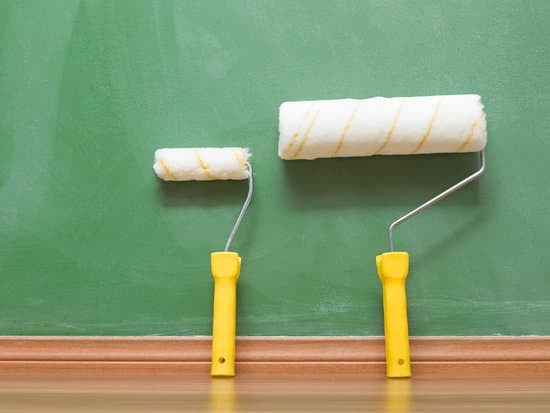Are you wondering how to pull out equity in your home for improvements? Home equity can be a valuable resource for homeowners looking to make renovations or upgrades to their property. Understanding how to access and utilize home equity can provide the financial flexibility needed to turn your renovation dreams into reality.
Home equity is the difference between the market value of your home and the amount you still owe on your mortgage. It represents the portion of your property that you truly own, and it can be a powerful tool for financing home improvements. By tapping into this resource, homeowners can fund renovations, repairs, or upgrades without needing to dip into their savings or take out high-interest personal loans.
In this article, we will explore the various options available for accessing home equity, including home equity loans and lines of credit (HELOC). We will also discuss the risks and benefits associated with using home equity for improvements, as well as provide a step-by-step guide to applying for these financing options.
Additionally, we will cover alternative methods for financing home improvements and offer tips for responsibly utilizing home equity. Whether you’re considering a major renovation or planning small upgrades, understanding how to leverage your home’s equity can be key to achieving your goals while making informed financial decisions.
Assessing Your Home’s Equity
When considering how to pull out equity in your home for improvements, the first step is to assess the value of your home and calculate how much equity you have. Here are some key factors to consider:
1. Obtain a professional appraisal: Hiring a licensed appraiser can provide an accurate estimate of your home’s current market value. This will give you a starting point for determining your home equity.
2. Research comparable sales: Look at recent sales of similar properties in your neighborhood to get an idea of what similar homes are selling for. This can help you gauge the potential value of your own property.
3. Subtract outstanding mortgage balance: To calculate your home equity, subtract the amount you still owe on your mortgage from the current market value of your home. The remaining amount is your equity.
Once you have a clear understanding of your home’s equity, you can explore options for accessing it, such as through a home equity loan or a Home Equity Line of Credit (HELOC).
It’s important to note that the amount of equity you can access will depend on various factors such as your credit score, income, and the lender’s policies. Understanding how much equity you have in your home is crucial in making informed decisions about using it for improvements.
Now that we’ve covered how to calculate the value of your home and assess its equity, let’s delve into the options available for accessing that equity, including the benefits and potential risks involved.
Options for Accessing Home Equity
When it comes to accessing the equity in your home for improvements, you have two main options: a home equity loan or a home equity line of credit (HELOC). Both of these options allow homeowners to tap into the value of their property to fund renovations, repairs, or other improvements. However, it’s important to understand the differences between the two and how they work before making a decision.
Home Equity Loan
A home equity loan, also known as a second mortgage, allows you to borrow a lump sum of money using the equity in your home as collateral. These loans typically have fixed interest rates and set repayment terms, making them a predictable and stable financing option for improvements. Home equity loans are ideal for homeowners who have a specific project in mind with a clear budget and timeline.
Heloc
On the other hand, a HELOC provides homeowners with a line of credit that they can draw from as needed. This revolving line of credit allows for more flexibility in borrowing and repaying funds over time. HELOCs often come with variable interest rates, which means monthly payments can fluctuate based on market conditions. This option works best for those who prefer having access to funds over an extended period rather than all at once.
Both options offer advantages and disadvantages depending on your financial situation and improvement goals. It’s crucial to carefully weigh these factors before deciding which route is best for you in pulling out equity in your home for improvements.
Understanding the Risks and Benefits of Using Home Equity for Improvements
When considering using home equity for improvements, it’s important to weigh the potential risks and benefits of this financial move. Home equity can be a valuable resource for funding renovations, but it also comes with its own set of considerations.
Risks:
– Increased Debt: Taking out a home equity loan or HELOC means taking on additional debt, which can lead to financial strain if not managed carefully.
– Risk of Foreclosure: Using your home as collateral for a loan means that you could potentially lose your home if you are unable to make payments on the borrowed amount.
– Fluctuating Interest Rates: If you choose a variable rate HELOC, you run the risk of interest rates increasing over time, leading to higher monthly payments.
Benefits:
– Lower Interest Rates: Home equity loans and HELOCs typically have lower interest rates compared to other forms of borrowing, making them an attractive option for financing improvements.
– Potential Tax Benefits: In some cases, the interest paid on a home equity loan may be tax deductible, providing some financial relief.
– Increased Property Value: Investing in home improvements can increase the overall value of your property, potentially providing a return on your investment when it comes time to sell.
Ultimately, the decision to use home equity for improvements should be made carefully and with a full understanding of the potential risks and benefits involved.
Steps for Responsible Use:
1. Assess Your Financial Situation: Before tapping into your home’s equity, evaluate your current financial standing and ensure that you can comfortably manage the additional debt.
2. Carefully Consider the Project: Ensure that any improvements or renovations being funded by home equity will add value to your property and align with your long-term goals.
3. Compare Lenders and Offers: Shop around for the best terms and interest rates when considering a home equity loan or HELOC. Look for reputable lenders who offer favorable terms that suit your needs.
4. Create a Repayment Plan: Develop a clear plan for repaying the borrowed amount within your budget, taking into account any potential fluctuations in interest rates.
5. Monitor Your Home’s Value: Keep an eye on changes in your property’s value over time to ensure that you are not over-leveraging based on its current worth.
By carefully evaluating both the risks and benefits of using home equity for improvements, homeowners can make informed decisions about how to best finance their renovation projects while maintaining responsible financial management.
Step-by-Step Guide to Applying for a Home Equity Loan or HELOC
Evaluating Your Financial Situation
Before you start the process of applying for a home equity loan or HELOC, it’s crucial to assess your current financial standing. Take a look at your credit score, debt-to-income ratio, and existing monthly expenses to ensure that you are in a good position to take on additional debt. Lenders will also consider these factors when determining your eligibility for a home equity loan or HELOC.
Researching Lenders and Loan Options
Once you’ve evaluated your financial situation, the next step is to research different lenders and the types of home equity loans or HELOCs they offer. Look into factors such as interest rates, loan terms, closing costs, and any special offers or promotions that may be available. It’s important to shop around and compare options from multiple lenders to ensure that you’re getting the best deal possible.
Gathering Necessary Documents and Information
After selecting a lender and deciding on the type of home equity financing that best suits your needs, it’s time to gather all necessary documents and information for the application process. This may include proof of income, tax returns, property appraisals, and other financial documentation. Being prepared with all required paperwork can help speed up the application process and increase your chances of approval.
Overall, pulling out equity in your home for improvements can be a beneficial way to finance renovations or other projects. However, it’s essential to carefully consider the risks and benefits before moving forward with this option.
By following these steps and taking a thoughtful approach to using your home equity for improvements, you can make informed decisions about how to proceed with financing your projects while maximizing the value of your investment in your home.
Maximizing the Value of Your Home Improvements
When deciding to pull out equity in your home for improvements, it’s crucial to maximize the value of the money you invest. One way to ensure you’re getting the most out of your home improvement project is by focusing on areas that can significantly increase your home’s value.
This includes upgrading kitchens and bathrooms, adding square footage, enhancing curb appeal, and improving energy efficiency. According to the National Association of Realtors, these are some of the top renovations that can boost a home’s resale value.
Another way to maximize the value of your home improvements is by carefully planning and budgeting for the project. It’s important to research local market trends and understand which upgrades are popular in your area. By staying informed about current design trends and buyer preferences, you can make choices that have broad appeal and add lasting value to your property.
In addition to thoughtful planning and strategic upgrades, working with experienced contractors and using quality materials can also help ensure that your home improvements add significant value to your property. When choosing contractors or materials, consider those that offer warranties or guarantees for their work or products. This extra layer of protection can provide peace of mind and may be attractive to potential buyers if you decide to sell in the future.
| Home Improvement | Impact on Resale Value |
|---|---|
| Kitchen Remodel | 78% return on investment |
| Bathroom Addition | 60% – 70% return on investment |
| Energy-Efficient Windows | 60% – 80% return on investment |
Alternative Options for Financing Home Improvements
While using home equity for improvements can be a convenient option, it’s not the only way to finance your renovation projects. There are several alternative options that homeowners can consider when looking to fund their home improvement plans. One option is to apply for a personal loan, which can be obtained from banks, credit unions, or online lenders. Personal loans typically have fixed interest rates and are unsecured, meaning that they do not require any collateral.
Another alternative is to utilize a cash-out refinance, which involves replacing your existing mortgage with a new one that has a higher balance. The difference between the old and new mortgage is given to the homeowner in cash and can be used for home improvements. Cash-out refinancing often allows homeowners to secure lower interest rates than other financing options, making it an attractive choice for those looking to pull out equity in their homes.
Additionally, homeowners should also explore government loans and grants that are available for specific types of home improvements. For example, the Federal Housing Administration (FHA) offers renovation loans such as the 203(k) program which provides funds for both home purchase and renovation costs. Another option is energy-efficient mortgages (EEMs) which help homeowners finance energy-saving measures in their homes.
It’s important to carefully evaluate all of these alternative options for financing home improvements before making a decision on how to proceed. Each option has its own set of advantages and drawbacks, so it’s crucial to weigh these factors against your particular financial situation and home improvement needs before moving forward.
| Alternative Financing Option | Description |
|---|---|
| Personal Loan | Unsecured loan with fixed interest rates |
| Cash-Out Refinance | New mortgage with higher balance providing cash for renovations |
| Government Loans and Grants | FHA 203(k) program and Energy-Efficient Mortgages (EEMs) |
Tips for Responsible Use of Home Equity for Improvements
Using the equity in your home to finance improvements can be a smart financial move, but it’s important to do so responsibly. By following some tips for responsible use of home equity for improvements, you can ensure that you make the most of this financing option without putting yourself in a risky financial situation.
First and foremost, it’s important to carefully consider the total amount of equity you plan to withdraw from your home. While it may be tempting to take out a large sum of money for extensive renovations, it’s crucial to be realistic about what you can comfortably afford to repay. It’s recommended to consult with a financial advisor or mortgage professional to help assess how much equity is reasonable to access for your specific improvement plans.
Another tip for responsible use of home equity for improvements is to have a clear plan for how the funds will be used. Whether you’re remodeling your kitchen, adding an extra room, or making energy-efficient upgrades, having a detailed budget and project plan in place can help ensure that the money is spent wisely. This not only maximizes the value of your improvements but also reduces the risk of overspending and ending up with excessive debt.
Lastly, when using home equity for improvements, it’s essential to choose projects that will increase the overall value of your home. This way, you are not only enhancing your living space but also making an investment in your property. Prioritize improvements that have a high return on investment and are likely to boost the resale value of your home in the long run.
By following these tips, homeowners can make informed decisions about how to pull out equity in their homes for improvements and use these funds responsibly to enhance their living spaces while maintaining their financial well-being.
Conclusion
In conclusion, understanding how to pull out equity in your home for improvements can be a valuable tool for homeowners looking to make significant upgrades to their property. Home equity offers the opportunity to access a substantial amount of funds that can be used to enhance the value and comfort of your home.
However, it is crucial to carefully assess the risks and benefits before tapping into your home’s equity. By following a step-by-step guide to applying for a home equity loan or HELOC, homeowners can make informed decisions and navigate the process with confidence.
It is essential to remember that using home equity for improvements involves some level of risk, as it essentially means borrowing against the value of your home. It’s vital to weigh this against the potential benefits, such as increasing your property’s market value or creating a more enjoyable living space for you and your family.
When utilizing these funds, it’s crucial to maximize the value of your home improvements by carefully planning and budgeting for projects that will provide a good return on investment.
For those who may be hesitant about borrowing against their home’s equity, there are alternative options for financing home improvements, such as personal loans or refinancing. These alternatives come with their own set of advantages and disadvantages, so it’s essential to carefully consider each option before making a decision.
Ultimately, making responsible use of home equity for improvements requires thoughtful consideration, thorough research, and careful financial planning. By responsibly leveraging your home’s equity, you can create the dream home you’ve always wanted while ensuring a sound financial future for yourself and your family.

I’m thrilled to have you here as a part of the Remodeling Top community. This is where my journey as an architect and remodeling enthusiast intersects with your passion for transforming houses into dream homes.





